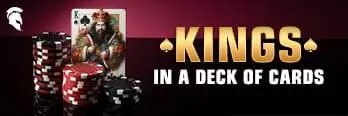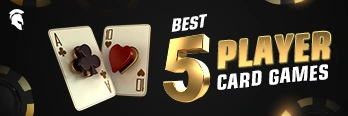After reading the title, don't flee! To play rummy, you don't need to open your ripped-up high school arithmetic textbook! We're here to demonstrate some basic mathematical strategies that will enable you to prevail in the game. Don't trust us? See how applying maths in basic ways can increase your odds of winning and help you win big!
Rummy is a well-liked card game in India, and since the introduction of online rummy, its popularity has increased significantly. There are several websites that offer ways to make money playing rummy.
Thus, playing online rummy can also be a source of cash. Rummy is a strategy and skill game, where winning or losing is mostly determined by your calculations. Numerous rummy techniques have strong connections to mathematical ideas.
Simple mathematical understanding can help you improve your rummy skills and win more games. To succeed in rummy, you must refine your abilities and understand a variety of methods.
Rummy Basics
Let's quickly review the fundamentals of Rummy before getting into the math. The goal of rummy, which is often played with two to six people, is to create sets and sequences of cards in your hand.
A set is made up of three or more cards of the same rank but different suits, as opposed to a sequence, which is made up of three or more cards in a row of the same suit. To accomplish the objective, players draw and discard cards, and the round is won by the first person to reveal their hand.
Probability in Rummy
After knowing the fundamentals of rummy, you might be wondering how mathematics can be applied to the game. Probability, then, can assist you in determining your odds of winning the game.
As we all know, there are 52 cards in a regular deck of cards, and there are four suits—hearts, diamonds, spades, and clubs—each with 13 cards. An ace (A), nine cards with numbers 2 through 10, and three face cards (K, Q, and J) make up each suit.
The probability of selecting a favourable card is (1/52) in mathematical terms.
In the same way, (1-1/52) = (51/52) is the probability of not selecting a favourable card.
So, you can see that there is extremely little chance of acquiring the desired card. Furthermore, it may be claimed that chance plays almost no part in rummy card games. You must therefore rely on your knowledge and talents to prevail in the game.
In rummy sequences are crucial. They serve as the game's building components, therefore having quick decision-making skills is helpful. Probability knowledge can be quite helpful in this situation.
Take a sequence of 2, 4, and 6 of diamonds, for instance. To finish the sequence, you require either a 5 or a 3. The fact that more possibilities can be created with 5 than with 3 is what prompts you to choose it.
Another crucial tip is to not hold onto cards like the 3 of Diamonds and the 8 of Diamonds if you see your opponent discarding a 5 of the same suits. Here, the likelihood of getting a sought card drops dramatically.
It is simpler to keep ahead of one's opponents when playing online rummy by following a few simple probability guidelines. A pure sequence is more likely to be made if you play with more decks. Second, keep track of who picks up and tosses out what.
The third element that will increase your chances of success in the online rummy game is colour. Probability is used to combine the sequences using permutations and combinations. You may win at online rummy by using these guidelines.
Read - Diamond Card and Club Cards
Basic math calculation and rummy
Basic mathematical concepts like addition and subtraction are taught in the early years of school. You can utilize your mathematical prowess to count the points in your hand in rummy games.
Suppose the following hand is dealt to you-
3♠-4♠-5♠ | K♠-K♣-K♥-K♦ | 5♦ 10♥ | A♣ 2♥ 8♣ 9♠
This hand has a set (K-K-K-K) and a pre-made pure sequence (3-4-5).
The remaining cards' points can be determined as follows:
44 points are equal to 5 (5♦), 10 (10♥), 10 (A♣), 2 (2), 8 (8♣), and 9 (9♠).
You have a 44-point burden in your palm. To reduce the point load to zero, you need two additional combinations. You can compute the points in your hand and maintain track of your game in this manner.
Melding Permutations and Combinations
In rummy, there are 52 cards in a normal deck. There are four suits: diamonds, hearts, clubs, and spades. A suit consists of 13 cards. Each participant is dealt 13 cards. To meld the cards into legitimate sequences and sets, several permutations and combinations are attempted.
To win, the players must create legal sequences and take the fewest number of turns. Using the idea of permutations and combinations, a skilful player of rummy can manipulate cards to create sets and/or sequences.
NPr= N!/(N-R)! represents a number of permutations of N objects taken R at a time. You can successfully meld cards using this formula.
Precise Point Calculation
It doesn't matter if you make a meld or fold your cards in a game of rummy; you must always calculate your points. You must keep an eye on your points at all times while playing the game.
In order to prevent making incorrect melds or folding them out at the incorrect time, you must be able to compute points. Points that were incorrectly calculated also cost the game. Each card has a set number of points.
To stop points from growing, monitoring is necessary. The game's loss scale increases as the final score increases. The points are reduced when cards are melded.
The winner of the rummy game is the person who scores 0 points first. The players must continuously discard high-value cards in order to keep their score totals low.
Consequently, accurate point calculation is essential to raise your chances of winning.
You stand a better chance of winning at rummy games if you are skilled at math. Additionally, we suggest that you practice games to sharpen your skills.
Playing Poker Card Games on Spartan Poker App
Searching for an exciting way to play poker online? You only need to look at the Spartan Poker app. Spartan Poker, which is well-known for its intuitive UI and wide selection of poker games, provides players of all skill levels with an engaging and safe environment.


















